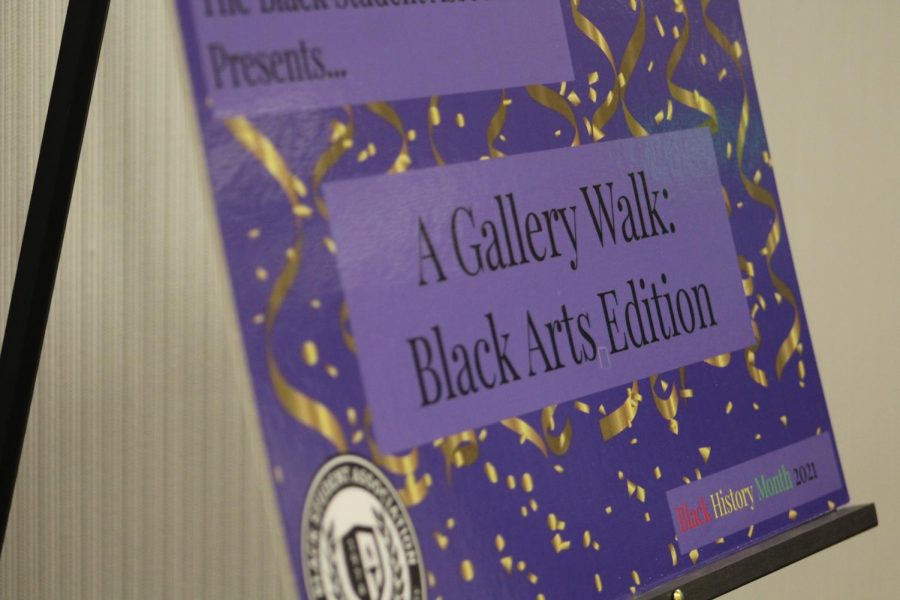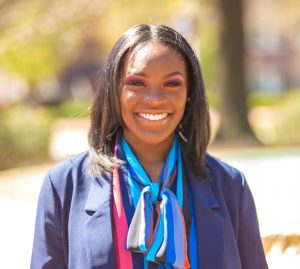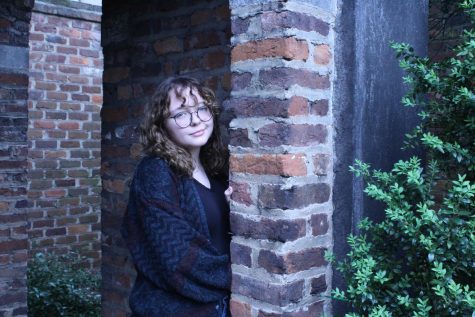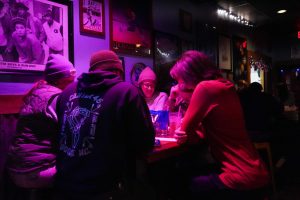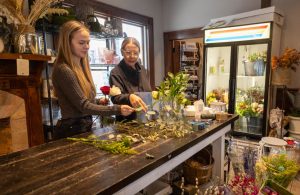BSA spotlights Black Arts Movement in gallery walk
The sign for the BSA Black Art Gallery Walk in the Plemmons Student Union.
April 22, 2021
Students can now participate in a gallery walk located in the Plemmons Student Union that allows them to explore art from famous Black artists, such as Imamu Amiri Baraka and Nikki Giovanni.
The gallery walk was organized by the App State Black Student Association and is centered around the Black Arts Movement.
The Black Art Gallery Walk is a self-guided tour that starts at the Office of Intercultural Student Affairs and ends at the BSA office, both of which are on the second floor of the Plemmons Student Union.
The gallery will stay up until the end of the semester.
The Black Arts Movement spanned from the mid-1960s to the mid-1970s and was contiguous with the Black Power Movement. While the art, literature and music from this era partially served to uplift the Black community, it was also meant to draw attention to violence toward Black people.
The purpose of the gallery walk is to “expose the community to some aspect of Black culture,” BSA president, Laouratou Boiro said.
Boiro said the current public school system does not provide enough education about the Black Arts Movement. She said that she hopes this gallery walk will not only educate people about the Black Arts Movement but also encourage them to do their own research into Black artists and culture.
“It can be hard for anyone with a marginalized identity to get that equitable attention and resources and education,” Boiro said. “So for me, it’s kind of just letting this be a stepping stone for some people in our community to start educating themselves about communities other than their own.”
The gallery features nine easels, each of which explains the Black Arts Movement or highlights a key artist in the movement, such as Maya Angelou or Sonia Sanchez.
Some of the easels include interactive QR codes. The easel titled “Who was involved?” has a QR code that links to a YouTube video about the key artists in the Black Arts Movement.
One of the last easels encourages participants to find a Black artist they like and make a collage of their work, Boiro said. She said this is a way to keep people engaged with the gallery walk and prompt them to learn about different artists from the movement.
BSA initially intended for the gallery walk to be a Black History Month event, but COVID slowed down the process, said Jerisha Farrer, assistant director of Intercultural Student Affairs and BSA lead adviser.
Farrer said instead of canceling the event, they decided to incorporate it into the university’s Diversity Celebration, which began on April 8.
Typically, Diversity Celebration is a week-long event, but this year the school condensed it into two days due to COVID, said Imani Dillon, the graduate assistant of the Multicultural Center. This year is the 20th anniversary of App State’s Diversity Celebration.
“I want people to take away that the Black Arts was a movement,” Farrer said. “It helped Black-identifying artists and individuals communicate, in a way, both feelings and emotions that sometimes we can’t put into words.”

